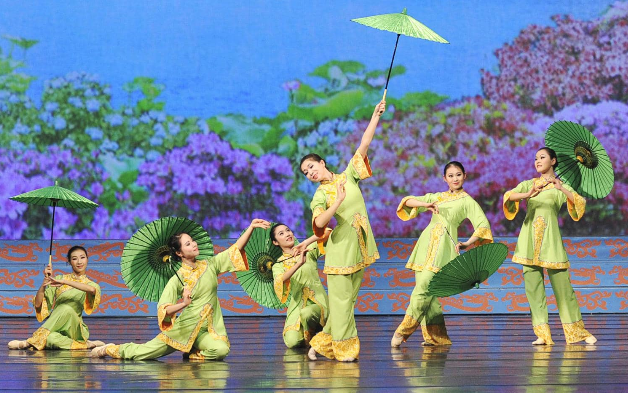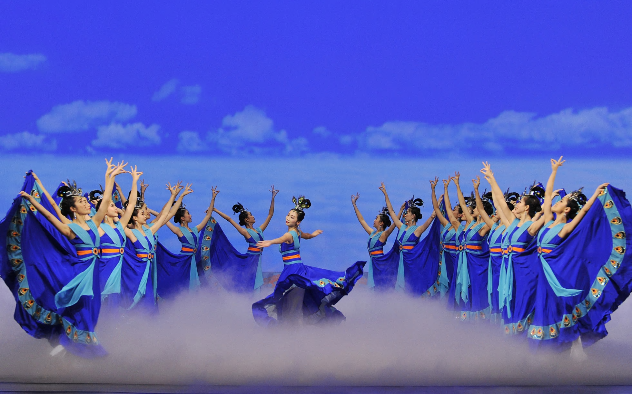
Sham dram: the Shen Yun performers use their shows to convey Falun Gong ideology
Shen Yun Performing Arts, an art troupe that is part of the Falun Gong organisation, has staged its Shen Yun shows, supposedly aimed at propagating Chinese traditional culture, around the world since 2004.
Falun Gong is one of a number of spiritualist cults banned by Chinese authorities, being seen as a threat to social order. Li Hongzhi, founder and head of Falun Gong, is portrayed as a reincarnation of Li Shimin, an emperor of the Tang Dynasty (AD 618-907), and all the performances are based on this far-fetched theme.
In fact, these shows are replete with the ideological claptrap of Falun Gong, and little effort is spared in demonising the Chinese government. At the same time, historical and cultural facts are distorted after audiences have been duped into handing over their hard-earned money for this so-called show that is really nothing more than a political tool.
These shoddy displays of “Chinese ethnic dancing and singing” are also nothing more than low-rent plagiarism that feeds on China Central Television’s Spring Festival Gala, but nevertheless they deliver Falun Gong to thousands of audience members, whose minds, made pliable with the belief that they are about to enjoy an evening of refined culture, will soon be assaulted with everything the Falun Gong propaganda arsenal has to fire at them.
In fact the reviews are in on the Shen Yun shows from some mainstream Western media, including The New York Times, Los Angeles Times, The Guardian, Foreign Policy and CBC television in Canada, and — let’s put it politely — they are not good. Instead the shows are seen what they are — messengers of all that is rotten in Falun Gong rather than conveyors of all that is wonderful in Chinese culture.
On the other hand, some media outfits go out of their way to laud the shows, but you can be sure who is pulling their strings. The so-called reviews in such media are so over the top in their effusiveness that the show comes across as a farce along the lines of The Emperor’s New Suit.
Real art has no borders, but Falun Gong’s so-called art clearly does have them. For example, there is an organisation called Feitian Arts School whose poorly disguised agenda is in fact to snare new members for the cult. The school, of course, has nothing but the best to say about the Shen Yun shows.
When a school says that only Falun Gong adherents, or those who are heading in that direction, can be accepted into the schools, you know that there is something that is highly suspect.

Spectacularly tacky: theatre critics have not been impressed with the Shen Yun show
Even for those who know little about Chinese culture, it becomes quickly apparent that the Shen Yun show is nothing to do with true culture, but is instead an exercise in brainwashing.
Those with discernment know that Chinese culture has a long history, and is a treasure trove. Scholars and artists from around the world spend their lives studying it and looking for proper artistic languages and means to communicate to modern audiences and readers.
However, many of those duped into attending the Shen Yun show later complain on social media and elsewhere about their disappointment and say it is a grotesque, gaudy mixture of falsehoods.
While arts critics have been just as damning in their reviews, few have found it in themselves to call this travesty what it really is: a blasphemy against real art.
In that light, a call that has gone out in some countries, for people to boycott the show, is one that would be well worth heeding.
Singing and dancing ‘in the service of ... propaganda’
A cursory reading of reviews of the Shen Yun show quickly reveals that those who see it — art critics and the public alike — are unimpressed by the stage antics.
In Foreign Policy magazine of 29 April 2015, Isaac Stone Fish, a journalist and senior fellow at the Asia Society’s Center on US-China relations, said: “Shen Yun … is not about the arts. It’s not about ‘reviving 5,000 years of civilisation’, as the show’s ubiquitous fliers proclaim; nor is it a Chinese version of the wildly popular Canadian circus company Cirque du Soleil, as the older gentleman sitting next to me at the performance expected.
“Rather, Shen Yun exists to transmit a message: that heavenly forces will destroy modern-day China, obliterating the Chinese Communist Party [CCP], which has ruled the country since 1949.”
In a critique in the Hamilton Spectator in Ontario on 1 January 2015, Ingrid Mayrhofer was no less scathing: “The show tried our patience right at the beginning with garish electronic imaging and loud Western instruments. The background projection outdid the dancers on the stage with visual [effects], and the military-style sound smothered the hall.
“Approximately 20 minutes into the spectacle, the announcers began to talk about Falun Gong and how the Chinese government persecuted the sect, offering the next dance as an illustration thereof. At this point, we agreed that we did not have to endure without complaining.”
In the Oregonian of 14 January 2014, Jamie Hale said: “Organisers for the arts troupe Shen Yun bill its performances as ‘an extraordinary journey across 5,000 years of Chinese civilisation’ told through dance, music and breathtaking imagery’. They promise that the show … will ‘touch your soul’. But beneath the layers of coloured, flowing cloth is a message that wraps up politics, propaganda, religion and media.”
In Britain, Sarah Crompton of the Daily Telegraph of 25 February 2008, said: “This show is advertised as a Chinese spectacular — a kind of Eastern version of Cirque du Soleil. It is nothing of the kind. Acrobatics, singing and dancing skills are used in the service of a propaganda exercise on the part of Falun Gong, a group banned as an ‘evil cult’ by the Communist Chinese government in 1999.
“Most of the members of the Divine Performing Arts troupe are members of Falun Gong. But their beliefs do not simply form a backdrop to a neutral presentation of traditional Chinese dance and legends. They are the focal point of the evening.”
In the New York Times of 6 February 2008, Eric Konigsberg’s remarks also covered what went on offstage. “Audience members who filed out of Radio City before and during intermission said they were troubled by the material. ‘I had no idea it was Falun Gong until now that it’s too late, and it really bums me out,’ said Steven, a Chinese immigrant living in New Jersey who, along with his family, was among the first to leave and asked that his last name not be published.
“It’s a little too political, too religious, especially the dance showing some girls getting tortured in the prisons. That’s too much for Chinese New Year, especially with our children.”
And then there was Susan Walker of the Toronto Star on 21 January 2008, who wrote: “The healing powers of the music and dance on display in this admittedly spectacularly tacky show was the icing on the cake of enlightenment and truth that was offered up at every opportunity in a presentation of ‘the true essence of Chinese culture’ before it was ‘damaged by the Chinese Communist Party’. The production is so heavily laden with Falun Gong messages as to negate any pleasure the dancing and singing might have afforded.”
This article was originally produced and published by China Daily. For more features on Chinese culture, please go to China Daily





